PC HARDWARE | MSI Radeon RX 570 ARMOR 8G OC
The AMD Radeon RX 570 is the tweaked version of the RX 470.

MSI has sent us one of the renditions of the RX 570 for a product review: the MSI RX 570 ARMOR 8G OC. This card has a core clock of 1268MHz, a whopping 8GB GDDR5 memory, 256bit memory bus and memory clock speeds of 7000MHz.
It features the classic black and white design of MSI’s ARMOR line up of graphics cards which is inspired by armor shielding. We personally are fans of black and white themed PC components and this graphics card’s design will complement such color scheme.
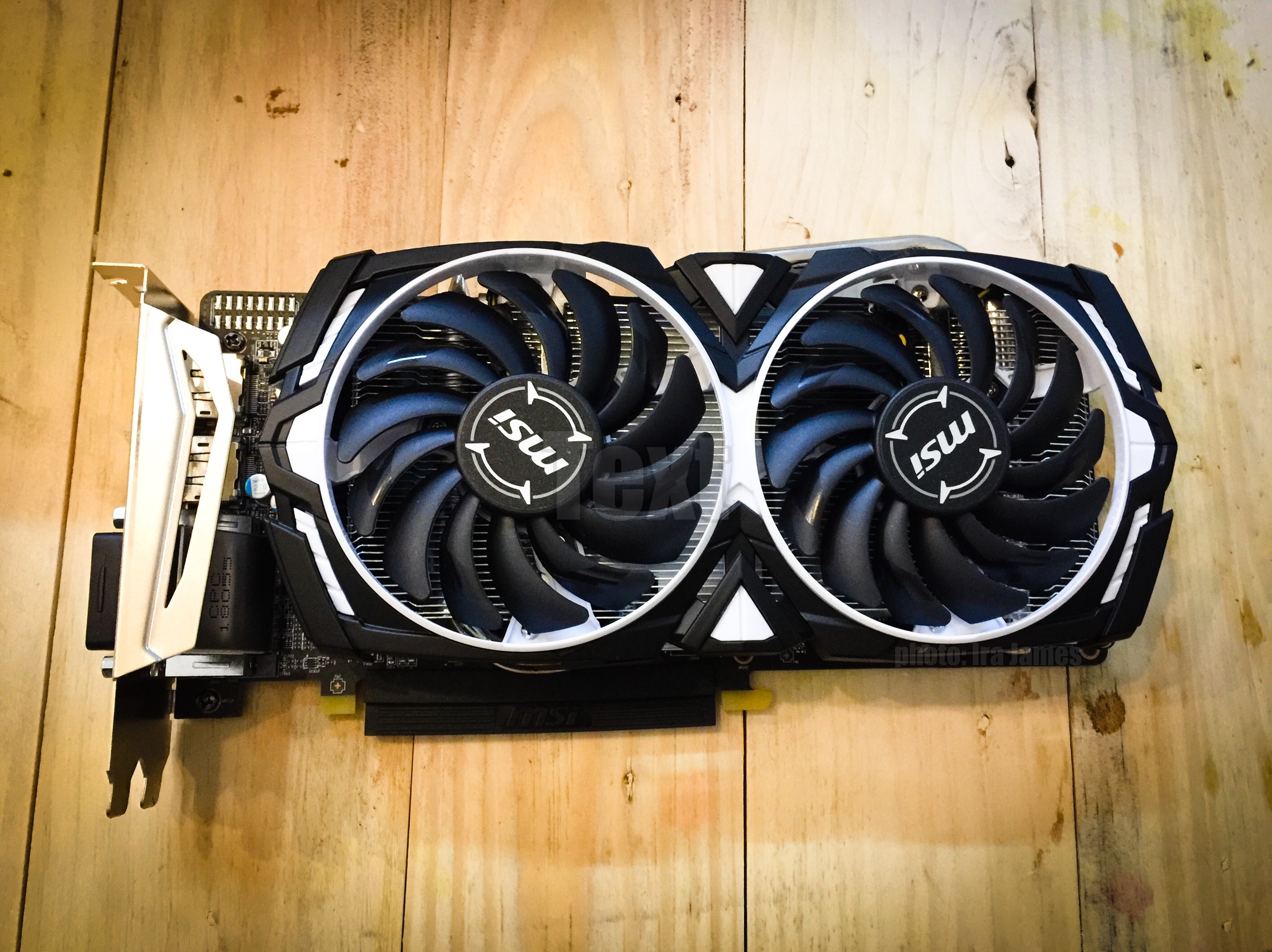
The AMD Radeon RX 570 is the tweaked version of the RX 470 and still uses the same Polaris architecture of AMD’s high-end gaming graphics cards.
It is more “refined and evolved” as AMD defines it and compared to the RX 470, the Radeon RX 570 has a 1,168MHz base and 1,244MHz boost clock, a mild increase from the Radeon RX 470’s 1,206MHz maximum clock. It’s a significant jump in base clocks, and that extra power also increased it’s TDP (thermal design power) from 120W to 150W. The MSI RX 570 ARMOR 8G OC is overclocked a little much higher.
Packaging

MSI packaged this graphics card in a box with the distinct ARMOR branding in the front and the usual product specifications behind the box.
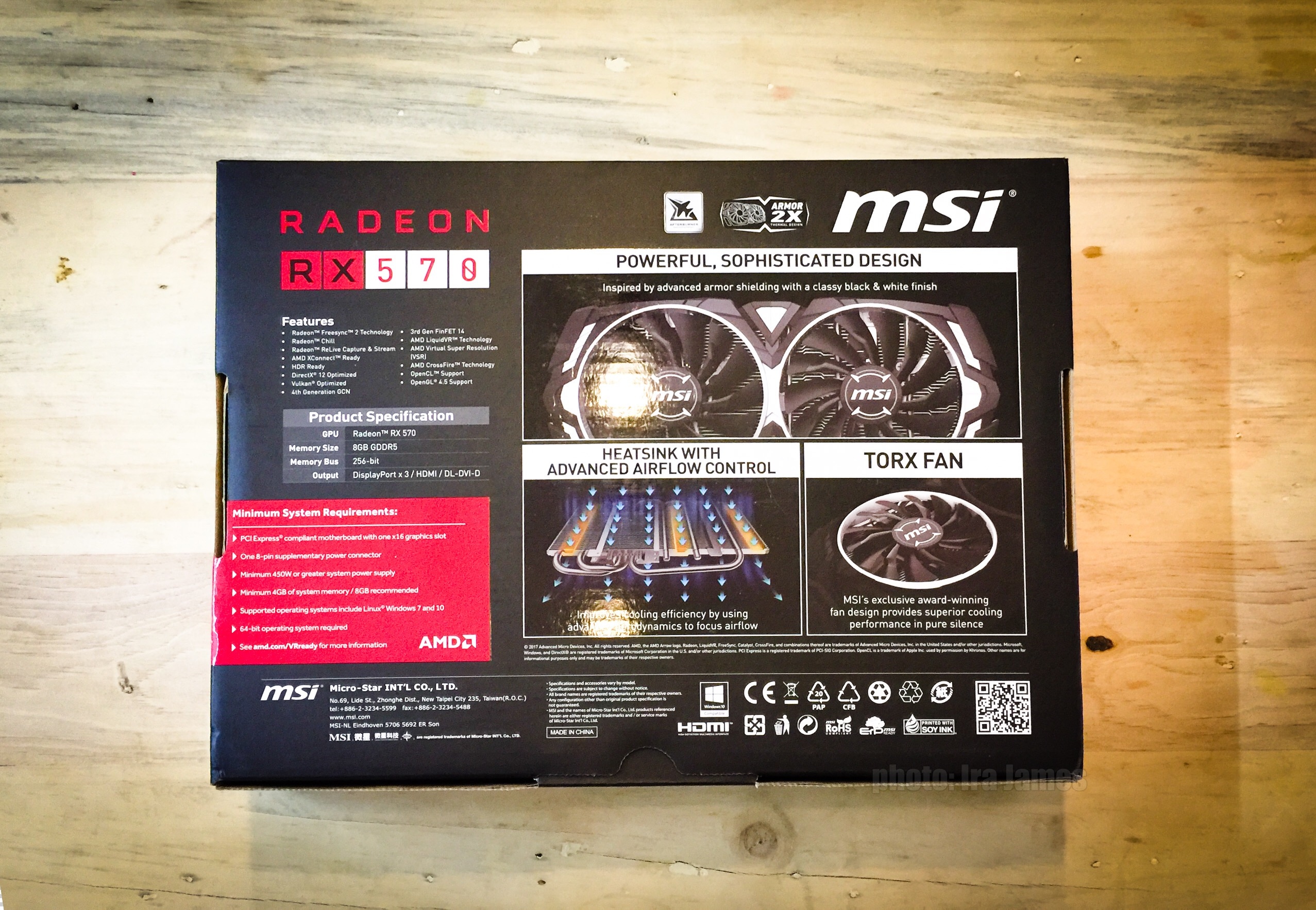
The package comes with the graphics card itself, the usual paperwork like the “Thank you” card and user’s manual, a driver CD, a few MSI stickers, and a really cool “Lucky the dragon computer workshop” comic booklet.

Overview
This MSI RX 570 ARMOR 8G OC is equipped with a huge heatsink with nickel plated copper heat pipes and two MSI TORX fans which provided excellent cooling performance. A notable feature of MSI graphics cards is the ZER0 FROZR feature which eliminates fan noise by literally stopping the fans in low-load situations. When idle, the GPU temperature is around 33°C-35°C. During most of our gaming tests, the graphics card was kept at pretty decent temperatures ranging between 60°C-65°C, with the scorching ambient temperature of 35°C. Unfortunately, the fans are very loud when set to 100%.

A generous amount of video outputs are provided: 1x HDMI, 1x DVI-D, 3x DisplayPorts. You can have a maximum of 5 displays utilizing AMD’s Eyefinity technology.

This card also supports other AMD Radeon exclusive features such as FreeSync 2, AMD LiquidVR technology, Radeon Chill, and the entire Radeon Software Adrenalin Edition suite, and AMD Crossfire (2-way bridgeless)

A single 8-pin PCIe power connection is required and it is recommended to use at least a 450w power supply.
The entire card’s dimension is 246mm x 130mm x 39mm and weighs around 622grams.
Technical specifications

Testing rig
For the benchmark test we will be using our AMD Ryzen 5 1600 rig with the latest AMD Radeon driver as of this writing. We will compare it with the closest GPU in its class the we currently have right now, the Nvidia GTX 1060. Here are the hardware specs:
CPU – Ryzen 5 1600 @ 3.8GHz
Motherboard – Asus Crosshair VI Hero X370
RAM – G.Skill Sniper 2x8GB @ 3200Mhz DDR4
MSI Radeon RX 570 ARMOR OC 8GB
GALAX GTX 1060 OC 3GB
Benchmarking
What we showed here is a series of results from different applications that will help us have an idea what kind of performance can the RX 570 give when it comes to a variety of GPU tests, which include both synthetic benchmarks and gaming.
First up we have 3D Mark’s Time Spy, a DX12 specific benchmark, and it gave our RX570 a GPU score of 3614 points while the GTX 1060 went ahead by scoring 3779 points. That’s around 4% difference in this synthetic benchmark.
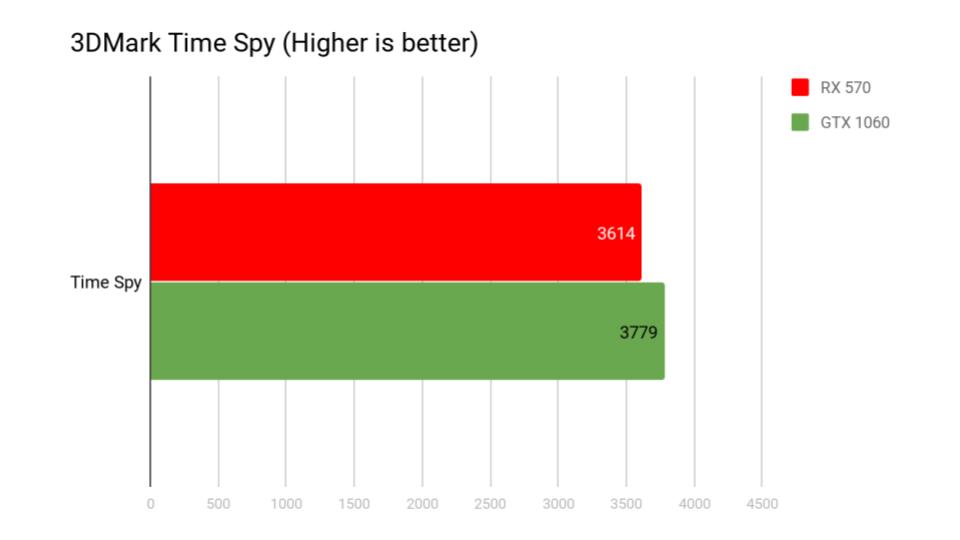
Next, another 3D Mark benchmark, Fire Strike. This time it gave our card a GPU score of 12343 while the GTX 1060 scored 12051. That’s a difference of around 2%.
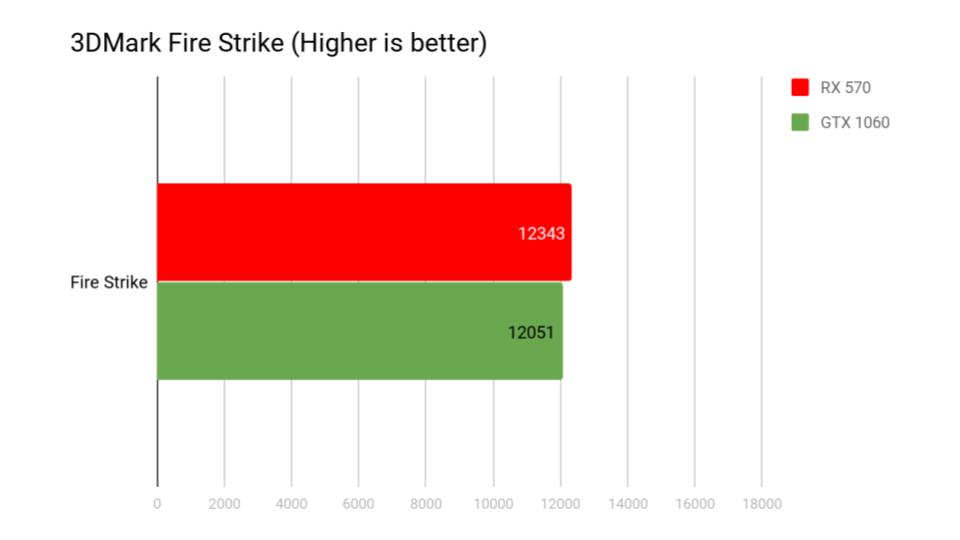
Then we also ran Unigine Heaven benchmark and it gave us a 96.5 FPS average while the GTX 1060 receives an average of 83.5 FPS. That’s a 15% difference between both graphics cards.
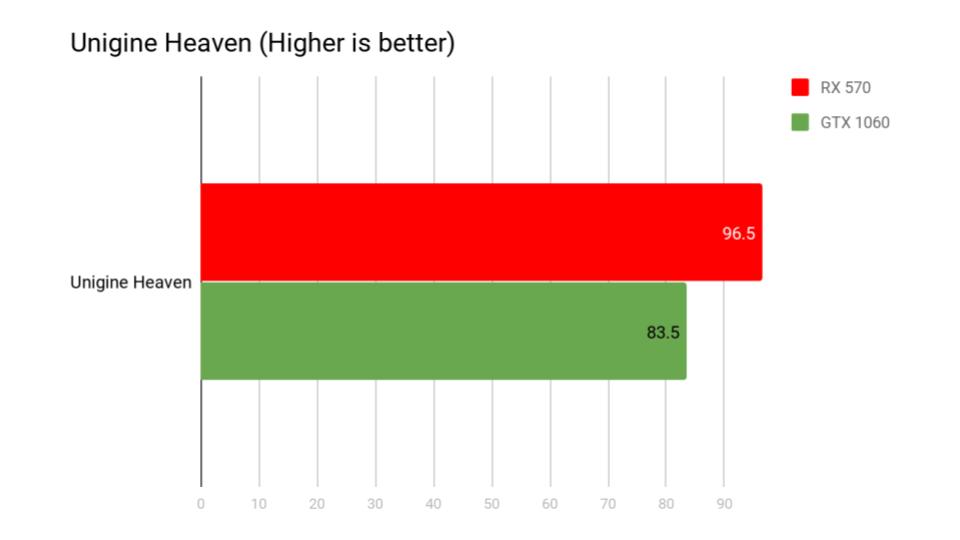
For productivity rendering test, we chose to use Blender, an open source 3D Computer Graphics software. We ran it with the BMW Benchmark test file and the BMW model took exactly 00:51:00 (fifty one seconds) to render while the GTX 1060 took 00:71:00 (seventy one seconds). Rendering with the Radeon card was faster than the Nvidia card.
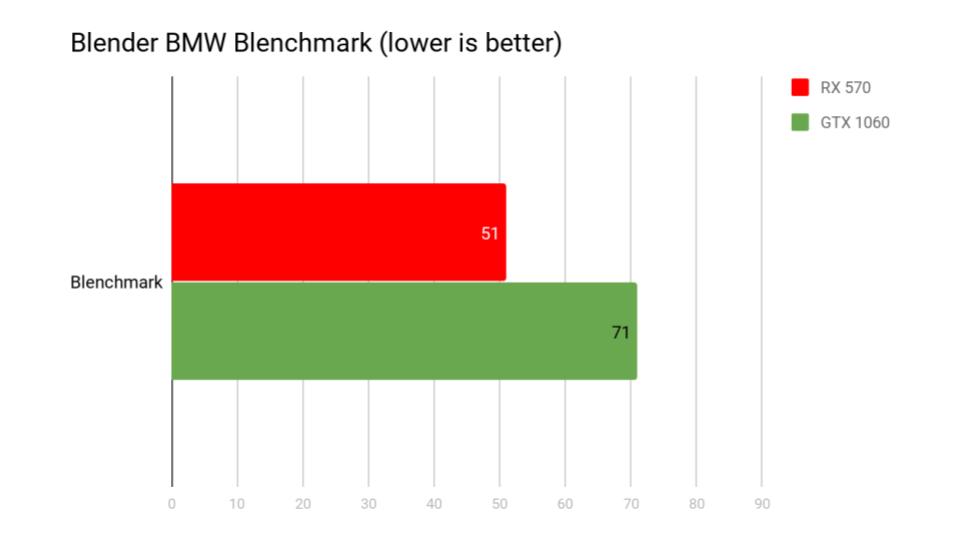
Now, for the gaming tests. We ran 4 games at high settings in 1080p resolution and the performance gap was really close. Both graphics card had an estimated 12% average difference in frame rate.
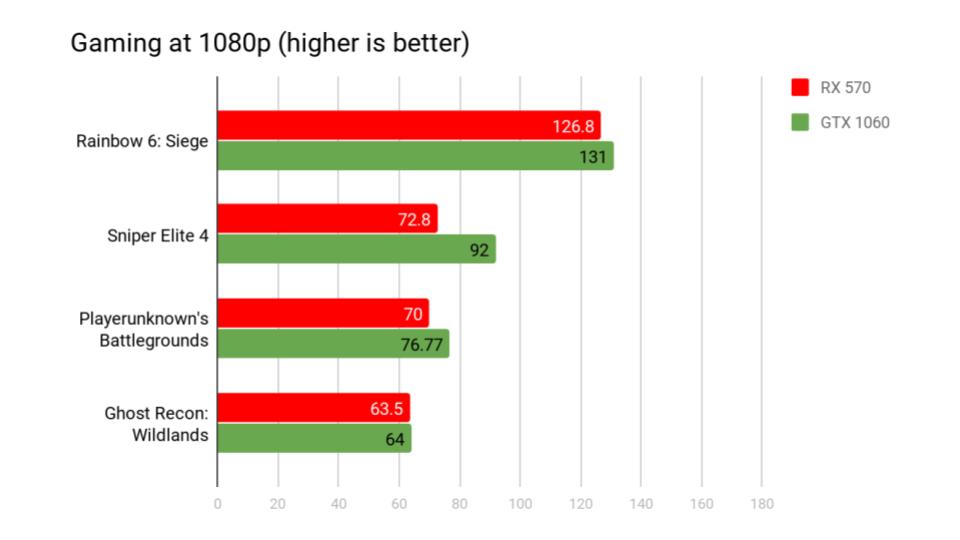
Conclusion
There was a mix in performance results between the two graphics cards but in gaming performance, the RX 570 was really close to the performance of the GTX 1060.
Sure enough, the 8GB video memory is more than enough to bring your high-end games to the highest possible presets in 1080p and still maintain a decent frame rate and the RX 570 does not disappoint in this aspect.
Nonetheless, the MSI Radeon RX 570 ARMOR 8G OC is definitely a graphics card to consider if you’re looking for something that is relatively quiet and can handle it’s own temperature without compromise on fan noise and graphics performance.
We would like to give this graphics card 4 out 5 stars. It didn’t surpass the GTX 1060 in most games, but it fared pretty well on some especially during the Blender test.
Pros
- 8GB GDDR5 VRAM – more headroom for higher quality visuals
- Can be pretty quiet and doesn’t get hot right away.
- the white and black GPU shroud is unique
- Good overclocker
Cons
- Fans are noisy when at 100% so we don’t recommend setting the fan speed too high.
- Still can’t be at par with the trimmed down GTX 1060 3GB



